From Pixels to Passport: Navigating the World as a Digital Nomad Motion Designer

Introduction:
When people talk about being a digital nomad, they often try to sell you on the dream of working from a beautiful, sunny, picturesque beach while sipping a margarita and immediately leaping into the ocean once work is over. They paint a picture of trekking across the Amazonian jungle while miraculously maintaining a stable 4K, crystal-clear Wi-Fi connection for client calls. However, having just experienced the digital nomad lifestyle myself, I can assure you that it's not always the case. There are plenty of days when you find yourself working from a tiny, windowless hotel room, trying to complete assignments. Missed flights, slow Wi-Fi, and unreliable Airbnb hosts are just some of the challenges you may encounter.
Being a digital nomad was not always glamorous but it allowed me to combine my passion for animation with my love for travel and that was a huge privilege. My creative juices were constantly flowing as I drew inspiration from the world around me. I had the opportunity to explore the magnificent temples of Angkor Wat, embark on a three-day motorcycle trip through Northern Vietnam, admire the ornate pagodas in Thailand, indulge in mouth-watering okonomiyaki in Hiroshima, and take a road trip through Georgia (the country) with my best friend. It was an incredible experience that I wouldn't trade for the world! All in all, I was gone for 5 months and traveled to Thailand, Vietnam, Cambodia, Japan, South Korea, Germany, Georgia and Armenia. I'm back in the states and am already preparing for my next adventure!
So why be a digital nomad? Well, you can work remotely from anywhere in the world. When you're not busy working, you can explore the world and environments all around you. You get to explore different cultures, be exposed to different languages, eat food you wouldn't ordinarily eat and meet lots of amazing people. Motion Graphics, thankfully, is an industry that can be done remotely provided you have the right set up and a stable internet connection.
By the way, you don't have to commit to this lifestyle permanently. You could take an extended vacation where you go away for a month, have 2 weeks off and work remotely the last two weeks. You can do what I did and travel for a few months at a time while maintaining a home base somewhere. Then of course, there are people who are permanent digital nomads. Every person is different with different circumstances.
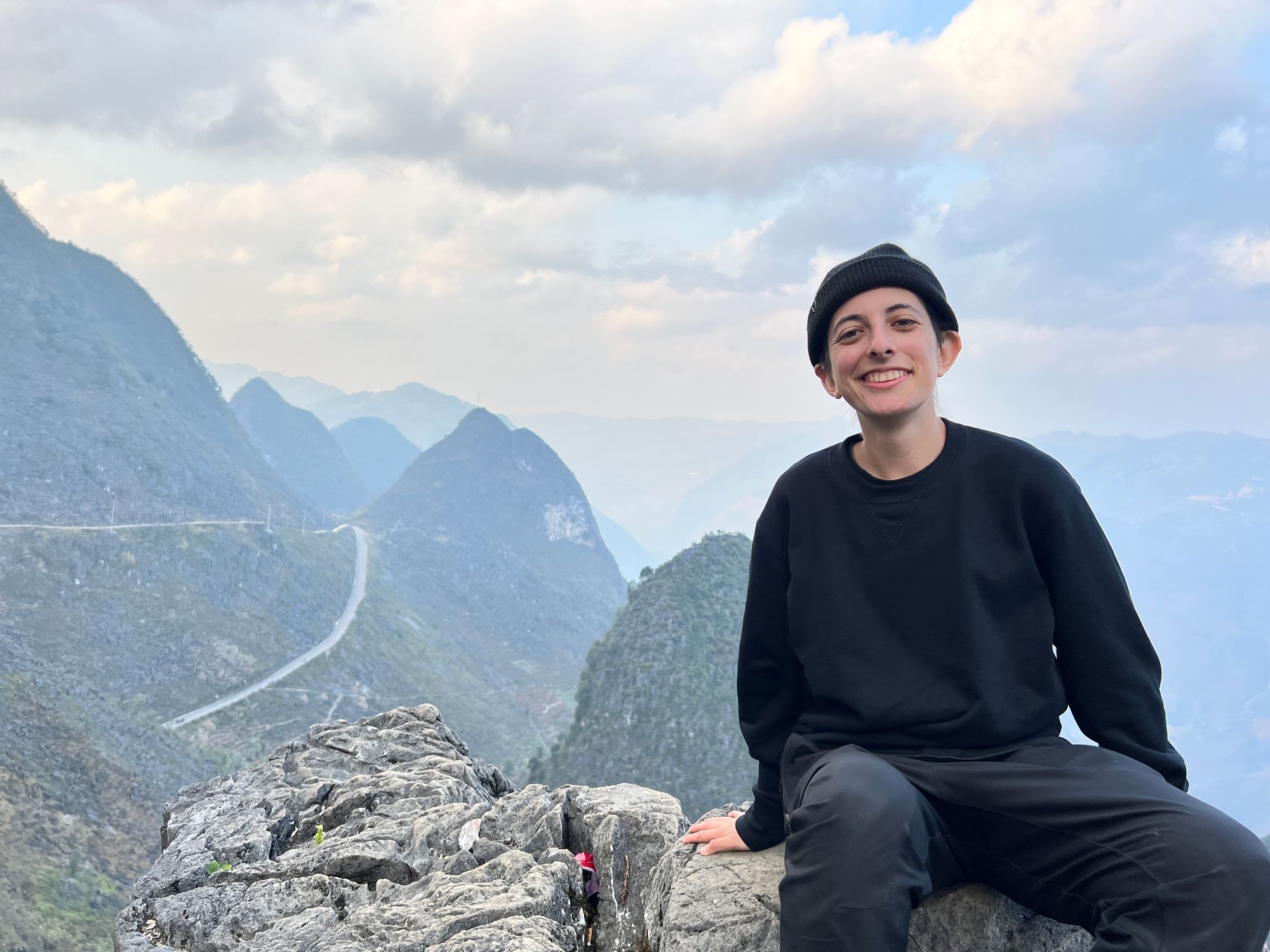

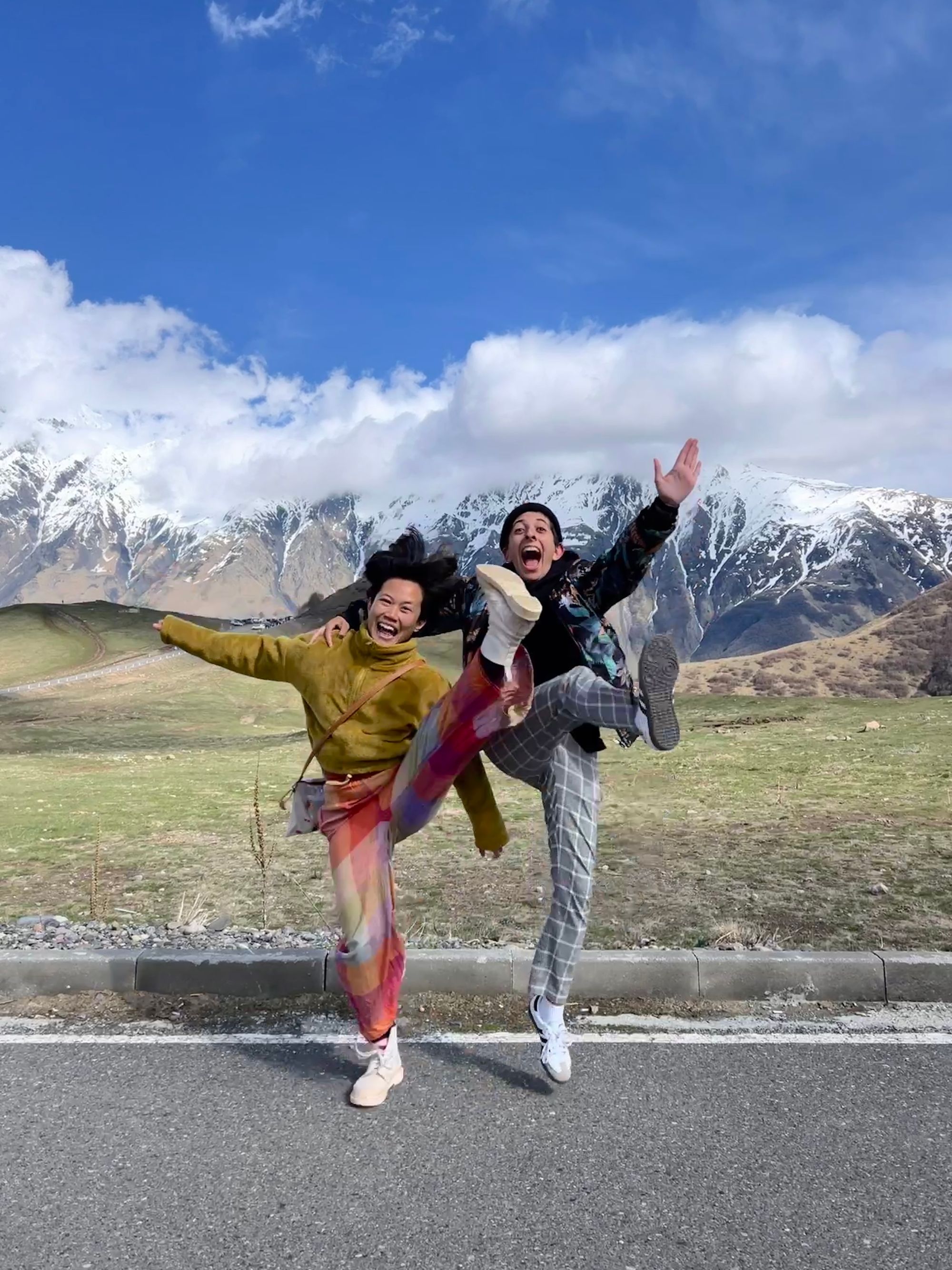

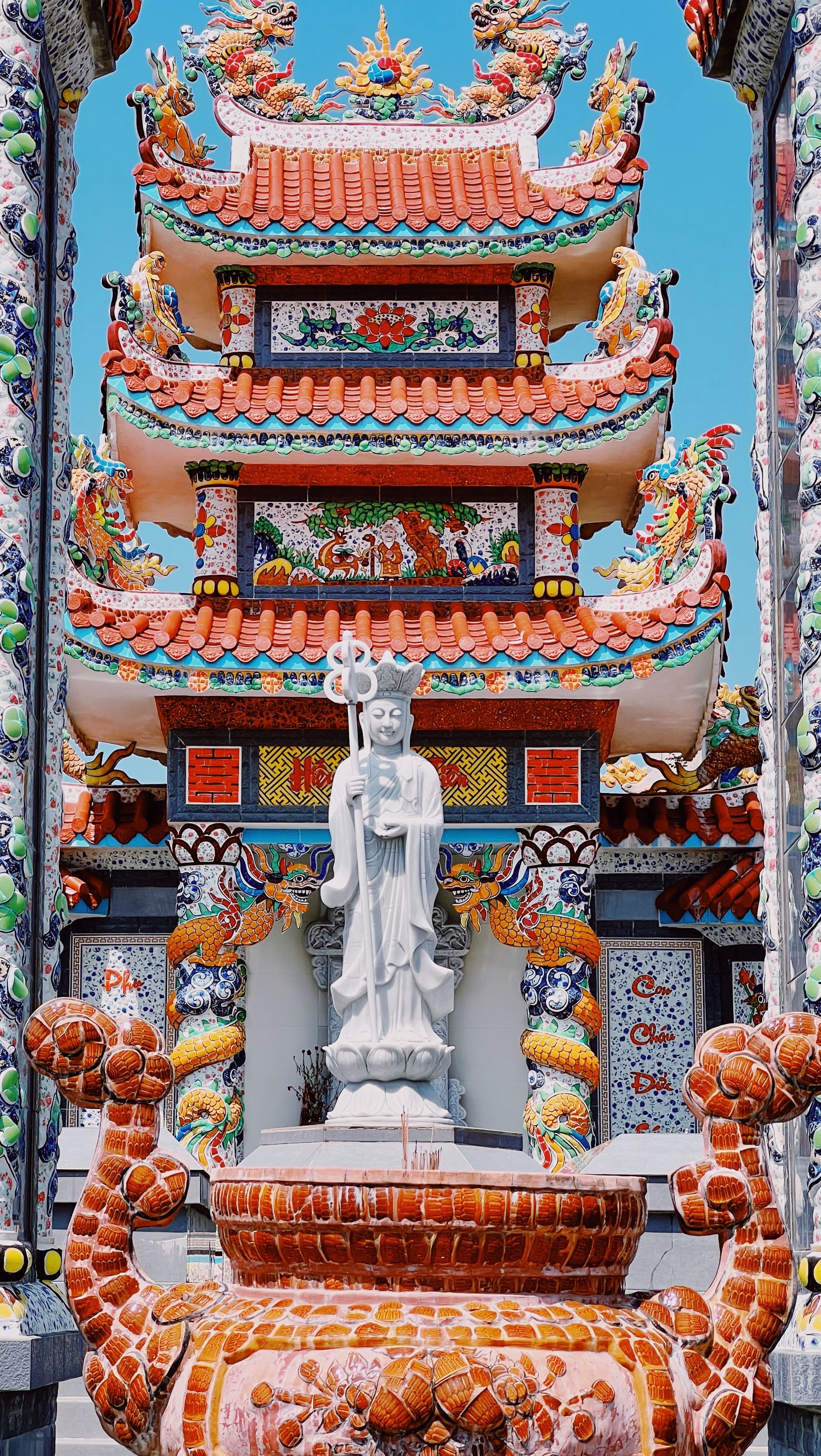
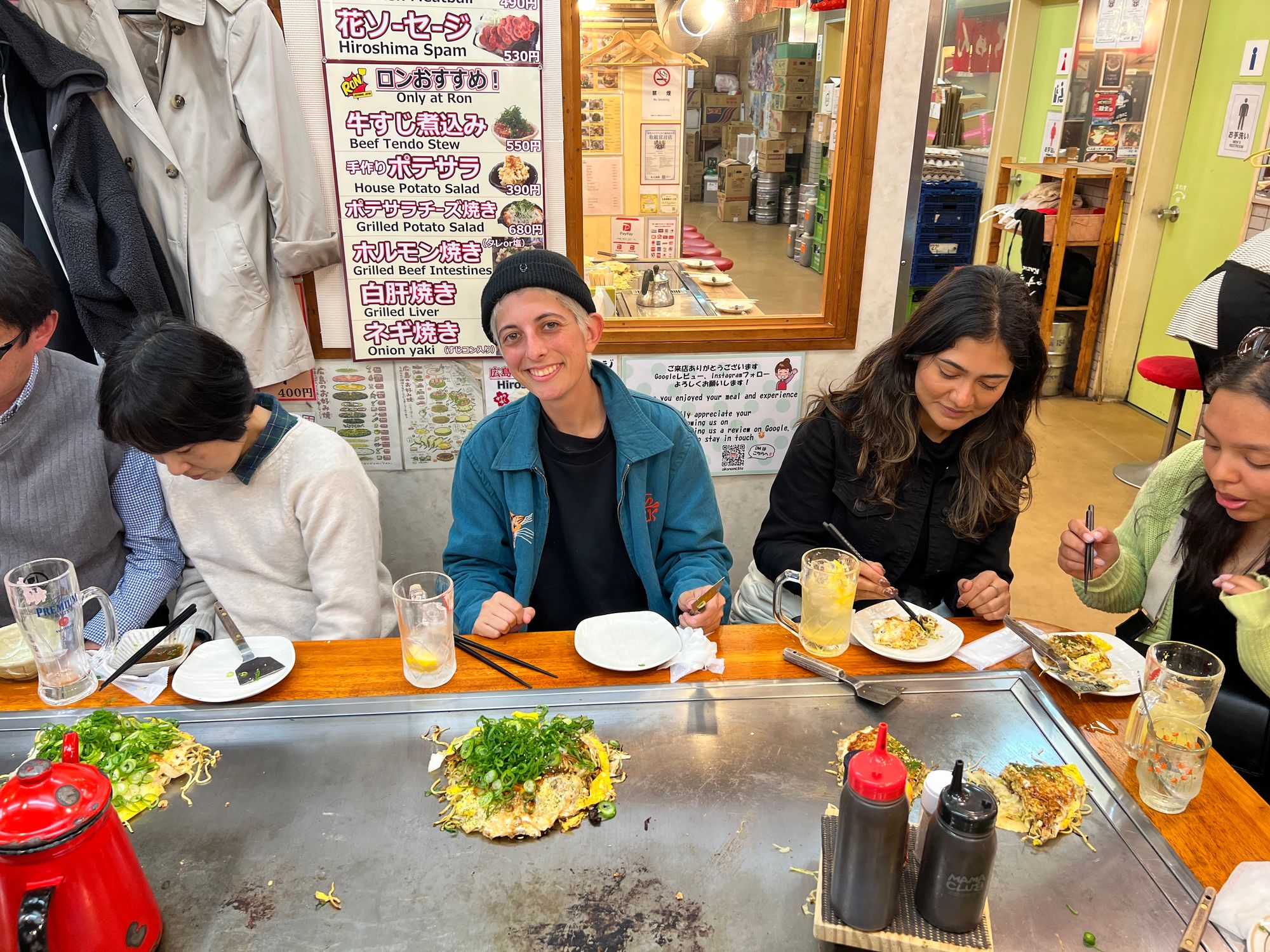
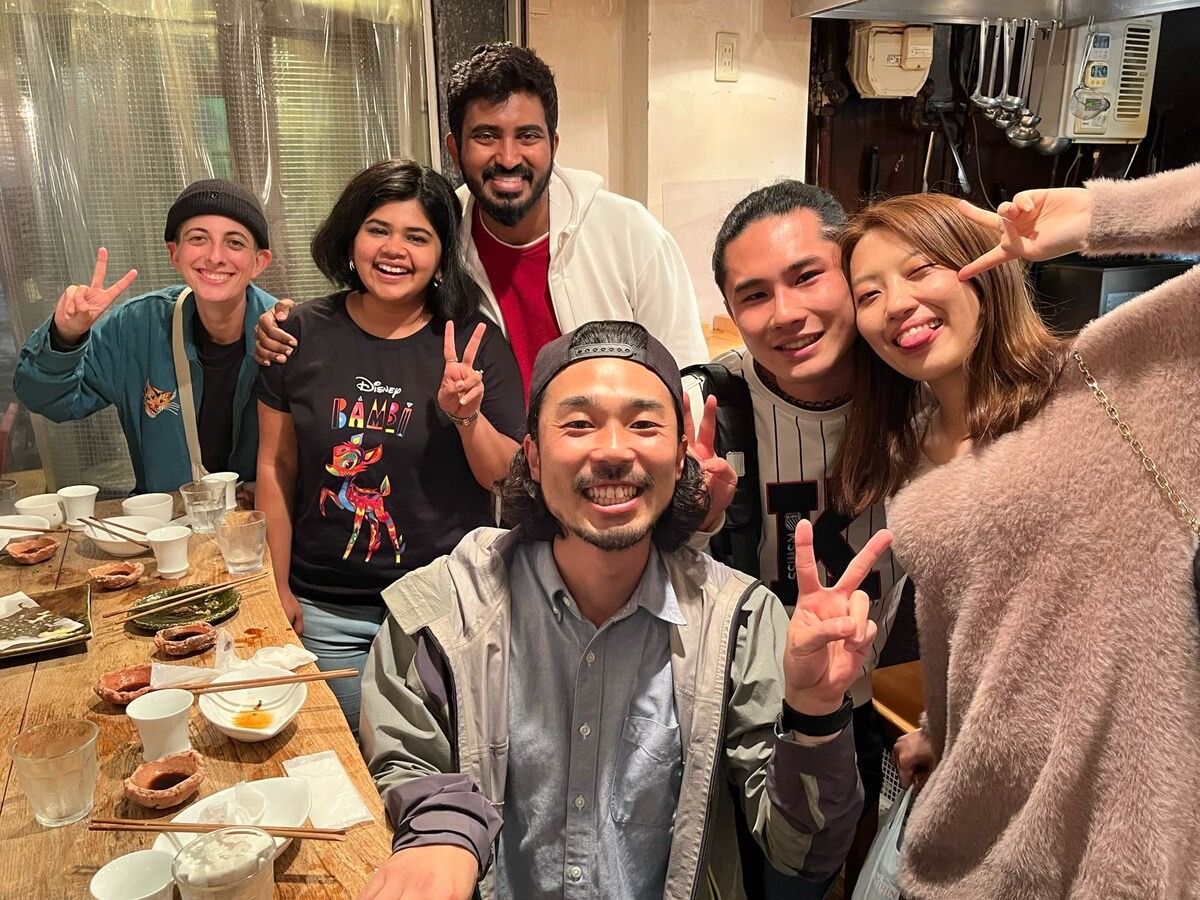
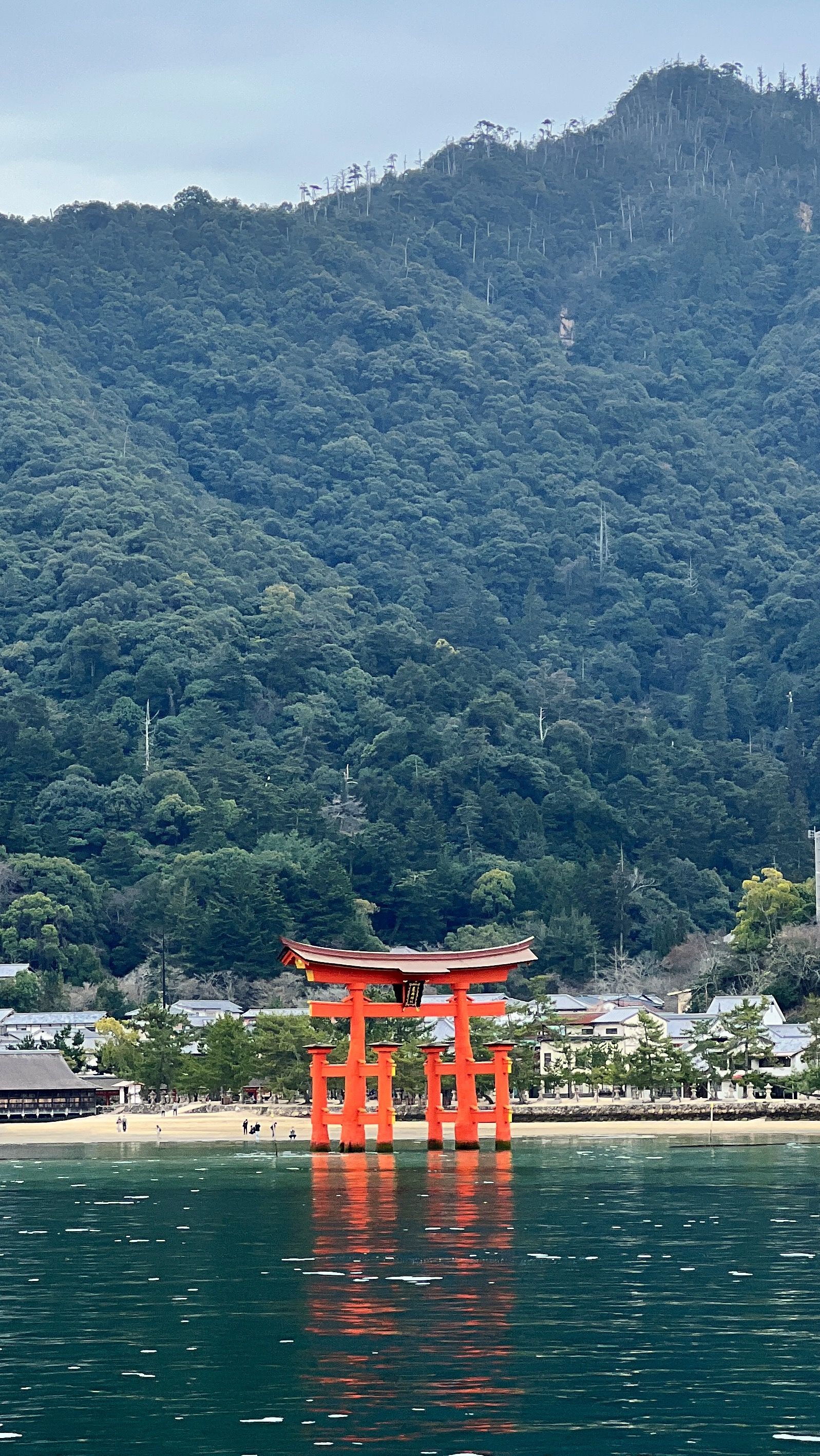
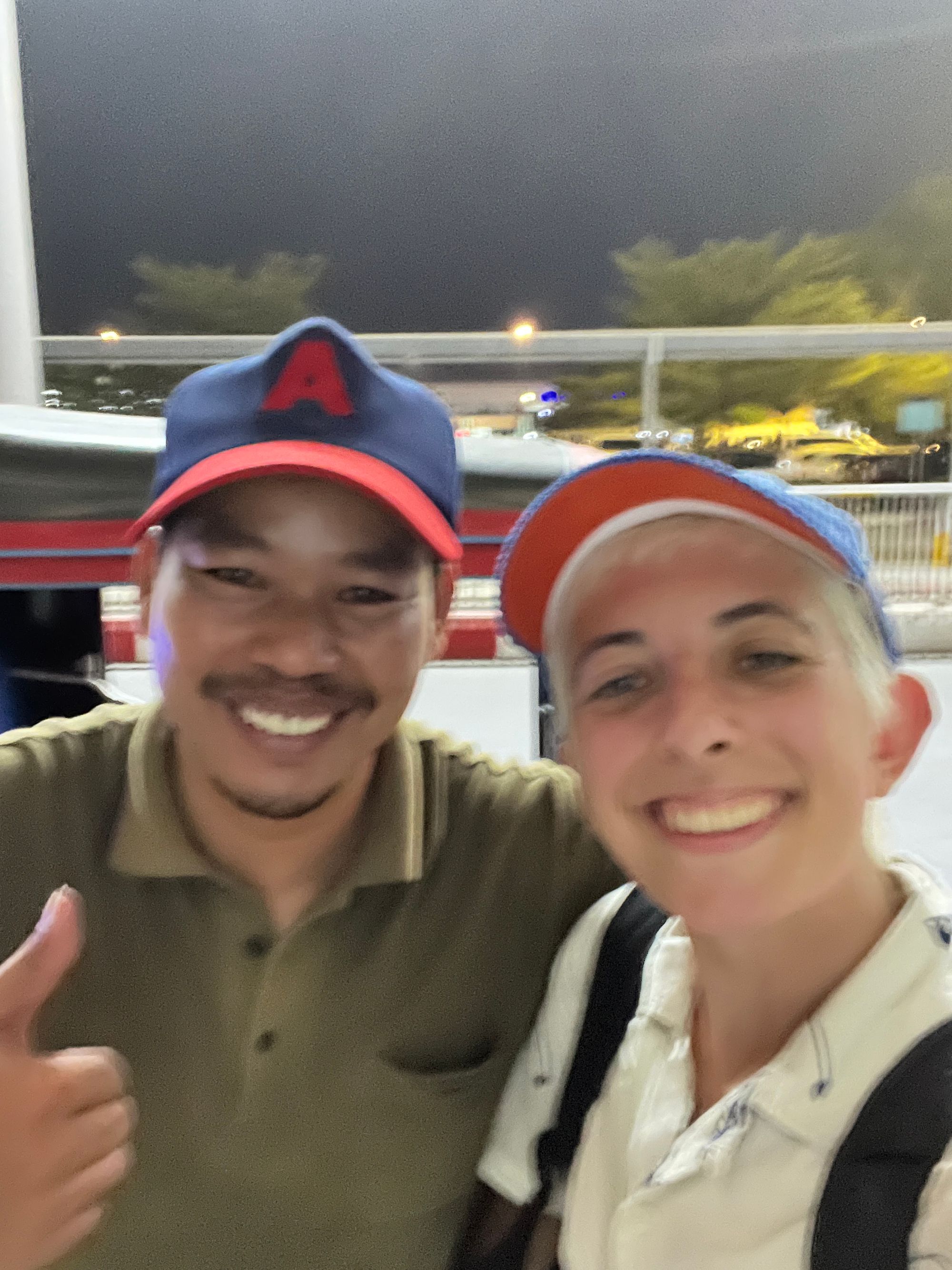
Start Small:

Okay, so you want to be a digital nomad, but where to begin? My advice would be to start small, especially if you've never done long-term travel before. Begin by exploring your home city or country and working from a new location. This will help you determine which equipment to bring and which to leave behind. It will also train you to overcome unexpected obstacles. For example, you might choose a coffee shop to work at, but their Wi-Fi isn't working. Do you have a backup plan? Perhaps there's another coffee shop down the street.
Some motion designers consider multiple monitors and high-speed internet essential, non-negotiable items. Others are content with just a laptop screen and work on less time-sensitive projects so they can manage with slower internet. Start small and work your way up. Otherwise, if you've never left the country and suddenly find yourself in a foreign land where you don't speak the language and something goes wrong, you'll experience panic and stress, along with culture shock.
My recent trip was a mixture of traveling to countries I'd never been to before and countries I've been to before. I'd been to Asia before so Southeast Asia wasn't a huge cultural adjustment but there were times I did encounter cultural shocks.
When I was choosing to make the leap to becoming a digital nomad, I did A LOT of research which helped me determine locations that were popular with other nomads. These locations were popular for a reason so I figured that the internet and local climates were friendly to remote work. That was the reasoning behind me choosing to visit Thailand and Vietnam for a month each was knowing that both countries had large digital nomad communities and would be easy to work remotely from. Southeast Asia is not the only place with thriving digital nomad communities. Mexico City, Buenos Aires, Lisbon, Barcelona, Bucharest, Tbilisi and Medellín are some of the most popular places for nomads.
Business & Taxes:

So, you've chosen your location for your next adventure. Before embarking, there are a few things you should consider. Firstly, if you're a freelancer, it's advisable to set up an LLC or S-Corp if you haven't done so already. These legal structures help protect your personal assets from business liabilities and debts. They also facilitate the separation of your personal and business life, making it easier to track business expenses, file taxes, and maintain accurate financial records. Additionally, being incorporated can provide tax benefits and deductions. Remember to have a separate business bank account for all your deposits and withdrawals.
Secondly, it's important to think about the logistics of getting paid. While digital payment methods like direct deposits and bank transfers have become more prevalent due to the pandemic, some clients in America may still prefer paying by check. You have two options in such cases: 1) arrange for your mail to be forwarded to a trustworthy family member or friend who can open and scan your mail for you, or 2) utilize a virtual mailbox service. These virtual mailboxes, available for a monthly fee, can open and scan your mail, with some even offering the option to deposit checks for you (for an additional fee).
In my personal setup, I have an S-Corp registered in Southern California, where I was born and raised, and where my parents reside. All my mail is sent to my parents' address, and they kindly assist by opening and scanning any important documents. For generating invoices, I use Freshbooks, which provides an option for my clients to pay by credit card. I offer my clients multiple digital payment methods, such as bank transfers, credit cards, or through platforms like PayPal/Venmo. By being flexible and accommodating, I aim to make the payment process as easy as possible for my clients (excluding checks, of course!). Freshbooks integrates with my business bank account, automatically categorizing my transactions for tax filing purposes, making it convenient for my accountant.
Speaking of finances, it’s important to take into account your personal financial situation and budget accordingly for your adventure. I made sure to have several months worth of savings saved up. I calculated how much money I typically spend in one month and added a buffer on top of that. Then I multiplied it by six (so six months worth of savings). Bonus: put your money in a High Yield Savings Account and enjoy the interest that you gain!
Additionally, get a debit or a credit card that does not have foreign transaction fees. Charles Schwab and Wise are great for this. I believe most travel credit cards will also offer this feature (such as Chase Sapphire). If you use your credit card often and it charges foreign transaction fees, those will add up very quickly over time.
Make sure to travel with multiple debit and credit cards in case they get lost or stolen. I would always leave a few cards behind at the hotel and bring one or two with me in case anything happened.
Remember to have emergency savings on top of your regular savings. You have to account for any unexpected expenses such as a medical emergency, accidentally missing your flight, etc. Purchase travel and/or health insurance for peace of mind.
It’s important to take in account the countries you’re visiting for how much to save up. For example, Southeast Asia is known for being quite affordable while Scandinavian countries are quite pricey. Your money will go further in Southeast Asia where you can live off of $30/day. It'll cost $30 just to have a meal in Scandinavian countries! However there are definitely trade offs. Public transportation in Southeast Asia is not great and you’ll be quite dependent on motorbike taxis, overnight buses, private vans or domestic flights while European countries in general have excellent public transportation.
Regarding taxes, TALK TO YOUR CPA.
American Digital Nomads can look into the Foreign Earned Income Exclusion (FEIE) which is a tax provision provided by the IRS that allows qualifying U.S. citizens or resident aliens who live and work abroad to exclude a certain amount of their foreign earned income from their U.S. federal income tax. The FEIE applies to income earned through employment or self-employment services performed while living abroad. In order to qualify for this, you must spend at least 330 full days in a foreign country within a 12-month consecutive period. Alongside the FEIE, individuals may also qualify for other tax benefits, such as the foreign housing exclusion or foreign tax credits.The foreign housing exclusion allows individuals to exclude certain housing-related expenses from their taxable income. Foreign tax credits can be claimed to offset any taxes paid to a foreign government on the excluded foreign earned income. I did not stay abroad for that long so I do not qualify for this.
To summarize:
- Prepare for your trip by setting up a legal structure like an LLC or S-Corp to protect your assets
- Consider logistics for payments
- Create a robust financial plan with savings and a travel-friendly bank card
- Keep multiple payment methods with you, avoid unnecessary fees, and have emergency savings
- Tailor your budget to your destination
The Tools:

As Motion Designers, our business lives and dies by the computer equipment we use. Personally, I used a 16” 16GB M1 Macbook Pro laptop and it worked great. My primary programs were After Effects, Photoshop, Illustrator and Premiere. I occasionally used Blender as well. The projects I worked on were primarily 2d After Effects animations with the occasional 3d here and there. I was nervous about the M1 being powerful enough for me to work effectively with After Effects and luckily, it ran pretty well. The battery life is great and having a portable SSD allowed me to preview my animations more efficiently. Hindsight being 20/20, I would’ve splurged for more internal storage and at least 32GB worth of RAM. However, 16GB of RAM was workable and I did not run into any major issues.
For storage, I used a SanDisk 1TB Extreme Portable SSD for caching and to host my project files which were synced to Dropbox on the cloud. It’s important to have multiple back ups of project files in case any equipment gets corrupted or lost. Two clients I worked with used Lucid for file storage. I uploaded all of my project files onto their Lucid servers so this was when having good upload speeds was important. Luckily, I was not working with 4k footage or heavy files but I did encounter slow upload speeds pretty consistently throughout my travels so files took longer than usual to upload.
I brought along a Razr mouse but I found that I was able to work on my trackpad pretty well so I rarely used the mouse. I did not bring any external keyboards as I wanted to keep my setup lightweight. Consider how often you’ll be moving around since that will factor how heavy or lightweight your setup will be. If you plan on staying in one area for longer periods of time, you can look into buying external monitors, storage and other hardware. If you’re on the move a lot, carrying around too much luggage will be burdensome. I was backpacking around Southeast Asia so I literally had all of my personal possessions in a singular backpack. Therefore, I kept my setup minimalistic and brought along only the absolute essentials.
If you are a power user and regularly work on more computer intensive projects, a laptop might not provide enough juice for your needs. There are remote desktop tools you can use such as Parsec or Chrome Remote Desktop which would allow you to remote into your beefy PC back at home while you’re on the go. Make sure you have contingencies in place if the PC somehow gets shut off. Make sure you’re working on a laptop that at least has enough power to finish your tasks in case of emergency.
If working off of a singular laptop screen isn’t comfortable, look into getting portable monitors that you can connect to your screen. Example:
If you’re on a Mac based set up, you can use your iPad as a secondary monitor for your laptop with the use of Sidecar.
However, I recommend traveling lightweight and only traveling with the absolute essentials. So if you can live without that external keyboard, I would recommend leaving it behind.
To summarize:
- Owning a powerful laptop capable of running the Adobe Creative Suite is a must
- Carry tools like the SanDisk 1TB SSD for caching and storage
- Utilize cloud based storage such as Dropbox and Google Drive
- Power users might consider remote desktop options for intensive projects
The Gear
I knew I was traveling for an extended period of time and to many different locations so I wanted to keep my set up as lightweight as possible. I've been a long time subscriber of /r/OneBag on reddit and you can read about when I traveled to Europe with just a backpack here. As a result, I traveled around Southeast Asia with all of my possessions in a single backpack and sling bag.
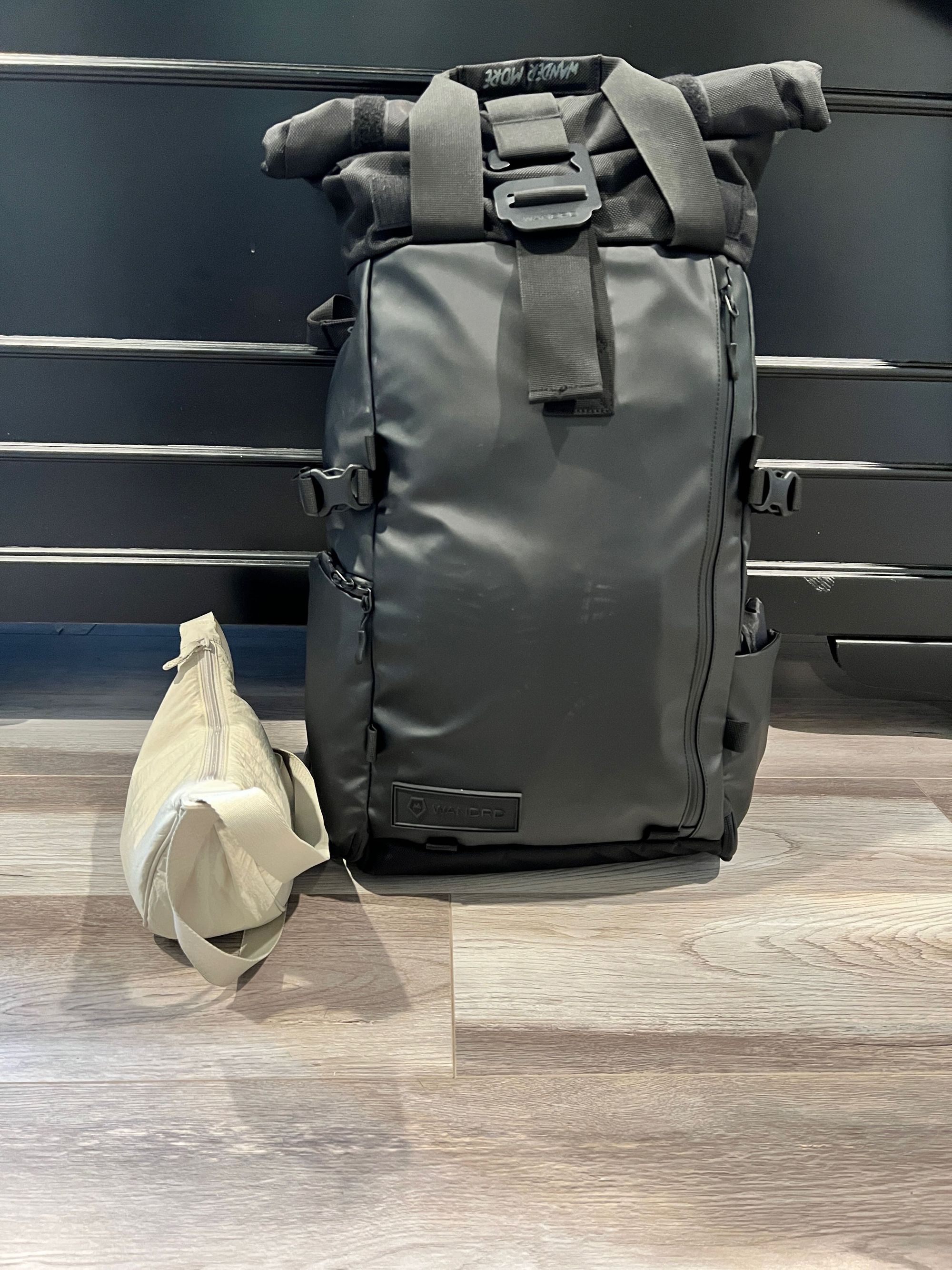
I used the WANDRD PRVKE (yes that's its name) as my backpack and the UNIQLO Round Mini Shoulder Bag.
I traveled with a week's worth of clothes, 1 pair of shoes, 1 pair of flip flops (essential for showering in hostels), a toiletry bag, a small towel, my laptop, SSD, chargers, travel adapters, a collapsable backpack and of course, my passport. Wait - a collapsable backpack?

Indeed. I kept all of my important possessions in the main backpack but when I would go out on day trips, take my laptop to a local coffee shop or go on shopping excursions, having an extra backpack along made it handy so that I didn't have to unpack everything from the main backpack. This backpack was super lightweight and when I wasn't using it, I could scrunch it up into a little ball and easily stow it away.
I did laundry once a week. Laundry services in Southeast Asia are plentiful and super cheap - I believe it cost me around $1/kg each time to do laundry and that included drying and folding. Some hostels and most Airbnbs would also have washers and dryers.
This set up worked great for me. A core strategy was to rock all black outfits so I never had to worry about clothes matching or not. While I looked very same-y in photos, at least I never had to fuss over what my outfit for the day was going to be!
However, I recommend traveling lightweight and only traveling with the absolute essentials. So if you can live without that external keyboard, I would recommend leaving it behind.
To summarize:
- Travel light
- Consider only bringing a backpack or a small suitcase
- Laundry services are everywhere - take advantage of them
Managing Projects and Client Communication:
So you want to be a Digital Nomad. There's just one problem. How do you convince your clients back home to allow you to work from a different location or even time zone? In my opinion, honesty is the best policy. Sure, you could try using a VPN to obscure your IP and work on your client's time zones without telling them but that seems like a lot of work and you run the risk of getting caught.
Before I embarked to Southeast Asia, I sat down with my California based client before our project kicked off explained to them that I would be working remotely from Thailand. I offered a solution where I would wake up at 6am Thailand time which would be 3pm California time. That allowed our schedules to overlap for a few hours while I could answer any Slacks, reply to emails and on rare occasions, jump into a meeting. My client was agreeable and I maintained this schedule from January to the May 2023. This schedule allowed me to wake up to any new feedback from the client and I could work on the animations while my client slept. My client could then wake up to a new animation the next day.
I worked on a project rate and I worked with my client to establish check in days for certain milestones. However, I set my own schedule to work on the animations when it was most convenient and as long as I hit the deadlines (which I did) there were no problems. On one occasion, I had an unexpected meeting at 11pm when I was staying in a hostel in Japan. I ended up taking the meeting outside as I didn’t want to disturb anyone who was sleeping.
Here are the programs and tools I used for effective client communications:
- Slack - for all client communications. Also I would drop video links and graphics for feedback
- Frame.io - my clients could give me time stamped feedback on my videos
- Dropbox - cloud based storage in case my laptop or hard drive was ever stolen
Your accommodations play a big factor when it comes to client communications. Coworking spaces, such as WeWork or Soho House, are an option for working and taking calls. However, not all of them are open 24/7 so do your research before relying on them especially if you're working weird hours.
To summarize:
- Transitioning to a digital nomad lifestyle requires transparent communication with clients about remote work
- Establish a schedule with overlapping hours with your clients
- Leverage tools like Slack, Frame.io, and Dropbox
- Consider suitable accommodations, like coworking spaces, which can facilitate effective client collaboration while working from different time zones
Accommodations:
When you’re on the go, your accommodations will be very important both in terms of your budget and your working space.
Here’s a few sites that are helpful for finding accommodations:
- Hostelworld
- Airbnb
- Booking.com
- Agoda
- Facebook groups
Personally, I stayed in a mixture of hostels, hotels and Airbnbs. I stayed in hostels all throughout when I was in Southeast Asia and then switched to mostly hotels and Airbnbs when I was in East Asia (mostly because I was burnt out of the hostel crowds by then ha!).
Hostels: Hostels are a type of affordable lodging that’s catered towards students, workers and travelers. Most hostels will offer a mix between a shared dormitory space (can host beds for between 2 and even up to 30 people in the same room!) and private rooms. Private rooms usually offer the same luxuries of staying at a hotel with the advantage that you’re staying in a much more social environment.
Pros:
- Cheap
- Great way to meet new people
- Most hostels will offer activities such as walking tours and excursions in the area
Cons:
- Lack of privacy
- Cleanliness tends not to be the greatest
- Loud - especially if you’re staying at a party hostel
- Wi-Fi can be hit or miss due to how many people are staying there
- Caters towards a young crowd
Hotels:
Pros:
- Offers more privacy than a hostel and also the luxury if not having to clean up after yourself
- Wi-Fi and air conditioning are usually pretty reliable
- Customer support is better than Airbnb
- Can earn points if staying at hotel chains which can save you money down the road
Cons:
- Lack of privacy due to strangers coming in to clean your room
- Usually no kitchen space to do your own cooking
- Can be on the expensive side
Airbnbs:
Pros:
- A good option long term stays and if traveling with multiple people
- Can offer kitchens for cooking
- Work areas provided with Wi-Fi - you can take calls at any hour of the day if you have the whole place to yourself
Cons:
- Airbnb customer support isn’t the best
- Hosts can be hit or miss
- There may be misleading or omitted information in the posting
To summarize:
- Hostelworld, Airbnb, and Booking.com are useful websites
- Hostels foster social interaction but lack privacy
- Hotels offer privacy and reliable amenities but can be costly
- Airbnbs suit longer stays and group travel but might vary in quality and support
Visas:
I didn't worry about visas since I was only staying in each country for a few weeks at a time. However, if there's a certain country that appeals to you and you want to stay there longer term, you'll have to find a way to legally stay there. Thankfully more and more countries are aligning themselves to become digital nomad friendly.
Here are a few visa programs worth checking out:
- Spain
The following below is an excerpt from their website:
"This visa is for any foreigner planning to live in Spain as a resident, working remotely for a Company or an employer (or self-employed) located outside of the Spanish national territory, and using exclusively computer telematics and telecommunication media and systems.
When the applicant is self-employed, he/she can also work for a company located in Spain, as long as the percentage of this particular work doesn't exceed 20% of the total amount of his/her professional activity.
The applicant must have an undergraduate or postgraduate degree from a University, College or Business School of prestige, or have at least 3 years of work experience in his/her current field of activity." - Estonia
"Right for remote workers to temporarily stay in Estonia for up to 1 year
For digital nomads who can work online & independent of location
For an employer registered abroad or their company registered abroad, or as a freelancer for clients mostly abroad
Apply at your nearest Estonian Embassy. Process takes up to 30 days" - Portugal
"Temporary-Stay Visa
This visa is targeted at digital nomads specifically. The visa offers those with proof of a remote job the opportunity to live in Portugal while maintaining their remote work that generates at least €2,800 a month. The visa lasts one year and can be extended up to four times for a maximum of five years. Additionally, you will only be charged a 15% tax rate as opposed to the standard Portuguese 25% for the first four years of your stay. Aside from these requirements and incentives, the visa has an identical process to the D7 Visa." - Canada
"The digital nomad visa will allow those who work for an employer outside of Canada to live in Canada for up to six months. Though Canada will focus more on tech workers, anyone with remote employment can apply. There is no salary threshold, which isn’t true of some countries, like Iceland, which requires a monthly salary of at least $8,000 to apply.
Should digital nomads land a job with a Canadian employer while in the country, they can also apply for a temporary work permit and stay for an additional three years, after which it’s possible to apply for citizenship (the naturalization rule is that you’re in the state for 1,095 days in a five-year period)."
Many countries offer some form of a Working Holiday Visa to people underneath a certain age. For example, Americans can work abroad in Australia, Ireland, Singapore, New Zealand, Canada, and South Korea. The requirements and age limits vary across each country but usually it's available to people between the ages of 18 and 30.
Do your research and see which countries appeal to you and if they have any visa scheme that you can take advantage of!
To summarize:
- For short stays in different countries, visa concerns may not be a major issue
- However, if you're considering a longer stay in a specific country, explore digital nomad-friendly visa programs like those in Spain, Estonia, Portugal, and Canada.
- Explore working holiday visas for specific age groups in countries such as Australia, New Zealand, Singapore, Ireland, and more.
What Went Wrong?

No trip can ever go 100% perfectly or according to plan. So what went wrong and what did I learn as a result?
- On a few occasions, I woke up to freelance inquiries. By the time I replied back, they had already found a Motion Designer for the role. I missed out on freelance opportunities due to my extreme time difference from American clients
- I faced issues with slow internet connection in both Vietnam and Cambodia. Once a client wanted to video call and the Wi-Fi connection was extremely poor. This was at 6am Vietnam time and no coffee shops or coworking spaces around me were open yet. I had to reschedule the call.
- I got into a motorbike accident while in Thailand. I got an extreme road rash on the entire left side of my body but I still had an animation to complete. This was a decidedly not fun few days of recovering and bleeding all over my hostel's bedsheets. Luckily I didn’t need to go to the hospital.
- I missed a flight because my hostel misunderstood which airport I was flying out of so they sent for a personal driver who drove me to the wrong airport (RIP). I missed my flight and had to pay for new tickets out of pocket.
So what lessons can be learned from this?
One: accept the fact that you’ll get fewer gigs by working in a different time zone from your usual client base. The goal is to get quality projects that pay enough to cover your expenses rather than chasing every bottom of the barrel gig that may or may not pay well. Put in the work to maintain good relationships with existing clients. You do this by being an excellent communicator and by being someone who is reliable and drama free. Clients would much rather work with someone who is steady and reliable rather than a rockstar who can’t communicate for shit and can’t follow the client's brief.
Two: don’t solely rely on your accommodations for the internet. Get a physical sim card for whichever country you’re currently residing in and get a plan that includes hotspots. This is especially important for countries who do not have good internet infrastructure such as Vietnam and Cambodia. Oftentimes, a phone’s hotspot will provide a reliable connection so you can continue your work. I also recommend physical sims over e-sims. I found e-sims to be unreliable and they never offered enough data for my needs. Physical sims always worked much better and provided better reception.
Three: just don’t be dumb like I was (lol). Make sure to purchase travel and/or health insurance for going abroad in case any medical emergencies pop up.
Four: Be flexible and roll with the punches when mistakes like these occur. When switching to a new location, I suggest traveling during the weekends or non-work days in case any delays occur. You don’t want to be on the airplane or in the middle of a 5 hour bus ride and a video is due right then.
To summarize:
- Prioritize quality over quantity in projects
- Ensure reliable internet through physical SIM cards
- Invest in travel insurance
- Maintain flexibility to handle unexpected situations
Staying Connected

It can be difficult to keep in touch with your friends and family back home while you're on the road. Additionally, you may find yourself feeling isolated from the arts community. Traveling for extended periods of time can feel lonely and isolating. However, here's some ways to combat that.
- Engage with the arts community through social media or on Discord & Slack. There are many motion graphics communities out there - some of them are region specific as well! There's a NYC meet up Discord page, several UK based Discord or Slack servers, a Slack group for women & nonbinary animators, a Discord server for African based Motion Designers and much more! Shameless plug for Motion Collabs, a community I run on Discord.
- Motion Graphics conferences, film festivals and local meet ups are a great way to meet creatives from all over the world! OFFF Barcelona, Pictoplasma, Motion + Design, SIGGRAPH, NAB, Dash Bash, Camp Mograph and Blend are scattered all over the world.
- Engage with other digital nomads in your area. Nomadlist, Wifi Tribe and Hacker Paradise are among just a few that I can name. There are Facebook groups dedicated to specific locations and there are women only nomad Facebook groups. I'm no longer on Facebook so I can't list any specific groups to join so I encourage you to do your research!
- Stay at hostels or do activities through them. You'll get to meet backpackers from all over the world and you can find people to go on excursions with, eat meals together, go on pub crawls and all sorts of other fun activities.
- Guided tours are a great way to meet people and see sights that may be challenging for you to do on your own without the help of an experienced guide.
- TALK TO LOCALS DUMMY! Street food tours are a great way to interact with the local community and tasting the food that they eat on a daily basis. It goes a long way if you're staying in a foreign country for an extended period of time to learn their language and customs. I had positive experiences in both Taiwan and South Korea because I knew at least a few phrases in both Mandarin and Korean to get by.
To summarize:
- Combat the potential isolation of long-term travel by engaging with arts communities through platforms like social media, Discord, and Slack
- Attend motion graphics conferences and local meetups
- Connect with fellow digital nomads through networks like Nomadlist
- Interact with locals through activities like street food tours
Finances:
Most of the countries I visited were very cash driven so I could not keep track of my exact expenses. Here's a rough cost breakdown of what I spent (all in USD):
Thailand:
Flight from Los Angeles to Bangkok: $461
A hotel in Bangkok: $53/night
An 8 bed female dorm room in Chiang Mai: $13/night
3 hour van ride from Chiang Mai to Pai: $3
Street food, in Thailand, typically costs between $1-$3. Sit down restaurants, of course, were more expensive.
Vietnam:
A hostel private room in Da Nang: $10/night
Airbnb in Hoi An: $20/night
The Ha Giang loop is a 3 day, 4 nights motorcycle tour around Northern Vietnam. I booked the tour through my hostel in Hanoi so the trip included transportation, food, places to stay each night and a private driver. This cost me around $250 total.
A Grab (SEA's equivalent to Uber) ride from Ho Chi Minh airport to District 1 (the center of the city - about an hour ride): $13
Street food, much like in Thailand, costs around $1-$3
Cambodia:
Visa: $36 (Cambodia requires all visitors to get a visa in order to enter the country)
A hostel private room in Siem Reap: $18/night
Hired tuk-tuk driver for Angkor Wat: $20 (for the whole day. He drove me from site to site since Angkor Wat is huge and spread out)
Japan:
Japan Rail Pass (21 days pass): $462
5 bed dorm room in Nagasaki: $35/night
Airbnb in Hiroshima (private room inside someone's ryokan): $36/night
Ramen from a sit down restaurant typically cost around $5-$8. You could also get good quality affordable food at convenience stores.
South Korea:
I rented an entire apartment in Seoul for 2 weeks which came out to $532.
The train from Seoul to Busan cost ~$25.
Airbnb in Busan: $54/night
Sightseeing tour in Busan: $38
Food and coffee in South Korea were quite affordable. I could get an iced Americano for $1.
I spent the most money on accommodations and transportation. However, food was easily the cheapest thing in all of these countries. I could've easily spent less money on lodging in Thailand and Vietnam if I opted to stay in shared dorm rooms more often. I also saved money when I stayed in longer term lodging rather than for a few nights here and there. Japan by far was the most expensive country and staying in hostels was not much more cost effective than Airbnbs or hotels. Vietnam was the cheapest country.
My personal favorite cities to work from: Chiang Mai, Thailand; Hue, Vietnam; Ho Chi Minh City, Vietnam; Tokyo, Japan; Seoul, South Korea
Conclusion:
Being a digital nomad was an incredibly fun and exhilarating time for me. While everything did not go smoothly, at least it gave me a story to tell. I'm incredibly fortunate to have amazing clients who were okay with me working from a different time zone and I got to see a lot of incredible sites, meet a lot of interesting people and do cool activities. Doing the Ha Giang loop in Vietnam was probably one of my top 10 life experiences. As artists, I firmly believe we need to take inspiration from the world around us and the internet is a poor substitute for experiencing things in person. Traveling allows us artists to gain inspiration from different architecture, museums, food, music, schools of thought and more.
On a personal level, traveling forces you to become self sufficient and to be a problem solver. When things go wrong, it can often feel like it's the end of the world since you're so far removed from your usual support structures. You have to be the one to solve the issues. Traveling doesn't automatically make you a better person but by being exposed to a different environment and culture can allow you to gain empathy and understanding you didn't have previously.
So if you were on the fence about trying out this life style, I encourage you to go and make the leap! Life's too short to not take risks.
